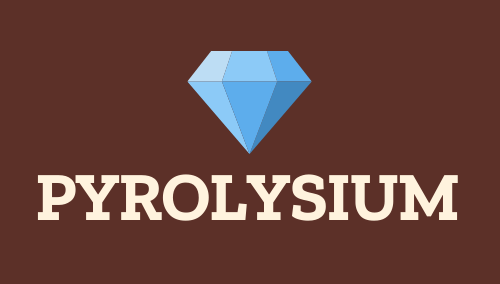As the world grapples with the pressing issue of waste management, embracing sustainable waste technology solutions has become increasingly crucial for creating a greener tomorrow. With the global population projected to reach 9.7 billion by 2050, the need for innovative and eco-friendly waste reduction strategies cannot be overstated. From advanced recycling technologies to circular economy models, there are numerous cutting-edge solutions being developed to minimize waste and promote environmental sustainability.

Reducing Waste with Innovative Technology
We’re committed to reducing waste through cutting-edge technologies that transform waste into valuable resources.
-
Sustainable Solutions
At Pyrolysium, we believe in harnessing the power of innovation to minimize our ecological footprint. Our team has curated a selection of pioneering technologies that showcase the potential for waste reduction.
-
Pyrolysis
Pyrolysis is a groundbreaking process that converts organic waste into biochar, a highly valuable resource for soil enrichment and carbon sequestration.
-
IoT Smart Bins
Bine’s intelligent waste bins utilize IoT technology, sensors, and AI-powered image recognition to efficiently sort recyclables from non-recyclable waste, significantly reducing landfill waste.
-
Composting
Composting is a natural process that breaks down organic matter into nutrient-rich fertilizer, reducing the need for synthetic fertilizers and minimizing waste sent to landfills.
-
-
Competitive Landscape
We acknowledge the presence of other notable players in the waste reduction space, including TerraCycle and Ecovative, which offer innovative approaches to waste management.
-
TerraCycle
TerraCycle’s closed-loop recycling systems enable the collection and processing of hard-to-recycle materials, promoting a circular economy and reducing waste.
-
Ecovative
Ecovative’s mycelium-based products offer a sustainable alternative to traditional plastics, reducing waste and promoting eco-friendly packaging solutions.
-
-
Best Practices for Waste Reduction
To maximize the effectiveness of these technologies, it’s essential to adopt best practices for waste reduction, including:
-
Source Separation
Separating waste at its source reduces contamination and increases the efficiency of recycling processes.
-
Education and Awareness
Raising awareness about the importance of waste reduction and the benefits of sustainable technologies encourages individuals and communities to take action.
-
Collaboration and Partnerships
Partnering with organizations and governments to implement large-scale waste reduction initiatives amplifies the impact of individual efforts.
-
Sustainable Waste Management Strategies
The 5 Rs remain a cornerstone of sustainable waste management: Refuse, Reduce, Reuse, Repurpose, and Recycle.
-
Refuse
Refusing unnecessary items reduces waste generation. Be mindful of packaging, choose products with minimal or biodegradable packaging, and decline single-use plastics.
-
Reduce
Reducing consumption decreases waste production. Adopt a minimalist lifestyle, buy in bulk, and choose products with minimal packaging.
-
Reuse
Reusing items extends their lifespan and conserves resources. Repurpose old items, donate gently used goods, and reuse containers.
-
Repurpose
Repurposing gives new life to discarded items. Get creative with DIY projects, turn old items into planters, and transform trash into treasure.
-
Recycle
Recycling converts waste into valuable resources. Participate in curbside recycling programs, compost organic waste, and recycle paper, plastic, glass, and metal.
Additional Strategies
In addition to the 5 Rs, consider these supplementary approaches:
-
Composting
Composting turns food waste into nutrient-rich soil. Create a home compost bin, participate in community composting programs, or purchase composted products.
-
Upcycling
Upcycling transforms waste into higher-value products. Get creative with art projects, turn old furniture into unique pieces, and repurpose materials for construction.
-
Waste-to-Energy
Waste-to-energy technologies convert waste into energy. Explore options like anaerobic digestion, gasification, and plasma arc gasification.
-
Circular Economy
A circular economy promotes waste reduction through design and production. Encourage companies to adopt circular business models, design for recyclability, and implement take-back programs.
Best Practices
To maximize the effectiveness of sustainable waste management strategies:
-
Implement waste segregation
Separate waste into categories like organic, inorganic, and hazardous waste.
-
Monitor progress
Track waste generation, recycling rates, and composting levels to identify areas for improvement.
-
Foster community engagement
Organize workshops, events, and educational campaigns to promote sustainable waste management practices among residents and businesses.
-
Collaborate with stakeholders
Work with local governments, businesses, and organizations to develop and implement effective waste management policies and programs.

Latest Technology in Garbage Disposal
We’re excited to share the latest innovations in waste management, focusing on cutting-edge technologies that are revolutionizing the way we handle waste.
-
Solar-Powered Trash Compactors
Solar-powered trash compactors are a game-changer in waste management. These compactors compress trash as it accumulates inside a dumpster, increasing its capacity by up to five times compared to traditional trash bins. They also feature built-in waste level sensors, making it easier to monitor and manage waste levels.
-
Pyrolysis Technology
Pyrolysis is a process that converts waste materials into valuable resources like biochar. This technology has gained significant attention in recent years due to its potential to reduce greenhouse gas emissions and promote sustainable waste management practices.
-
Smart Waste Management Systems
Smart waste management systems utilize IoT sensors and data analytics to optimize waste collection routes, reducing fuel consumption and lowering emissions. These systems also enable real-time monitoring of waste levels, allowing municipalities to respond quickly to changes in waste generation patterns.
-
Biogas Generation
Biogas generation involves the production of methane-rich gas from organic waste. This renewable energy source can be used to power homes, businesses, and industries, reducing reliance on fossil fuels and mitigating climate change.
-
Recycling Robotics
Recycling robotics is a rapidly evolving field that utilizes artificial intelligence and machine learning to sort and process recyclable materials. These robots can identify and separate various types of plastics, metals, and glass, significantly increasing recycling rates and reducing contamination.
As we continue to innovate and push the boundaries of waste management, it’s essential to acknowledge the importance of collaboration between governments, industries, and individuals. By working together, we can create a more sustainable future for generations to come.

Sustainable Technology
Sustainable technologies are those which are focused on the primary principles of sustainability – those that through reusing, recycling, protecting natural resources and energy efficiency, help reduce pollution.
- The core idea behind sustainable technology is to minimize its environmental impact by adopting eco-friendly practices and reducing waste generation.
- Some examples of sustainable technologies include renewable energy systems, green buildings, and eco-friendly transportation methods.
- These technologies not only help reduce greenhouse gas emissions but also promote resource conservation and sustainable development.
Pyrolysium’s Approach to Sustainable Technology
At Pyrolysium, we believe in harnessing the power of sustainable technology to transform waste materials into valuable resources.
- We utilize pyrolysis, a process that converts organic waste into biochar, a highly effective carbon sink.
- This approach not only reduces waste disposal costs but also helps mitigate climate change by sequestering carbon dioxide.
- Our mission is to educate and inspire individuals and communities to adopt sustainable practices and reduce their environmental footprint.
Competitors in the Sustainable Technology Space
While there are several companies working towards sustainable development, our focus remains on innovation and community engagement.
- Companies like TerraCycle and Ecovative are making significant strides in waste reduction and sustainable materials production.
- However, our unique approach to pyrolysis sets us apart from others in the industry.
- We strive to stay ahead of the curve by continuously researching and developing new sustainable technologies.
Key Benefits of Sustainable Technology
The adoption of sustainable technology offers numerous benefits, including:
- Reduced greenhouse gas emissions and mitigated climate change
- Conservation of natural resources and reduced waste generation
- Improved air and water quality, leading to better public health
- Economic benefits through cost savings and job creation
Sustaining Technology: Enhancing Performance through Continuous Improvement
Sustaining innovation refers to the ongoing effort to enhance the performance, features, and overall value proposition of a product or service without fundamentally changing its core characteristics.
-
Key Characteristics:
- Aims to improve performance, add features, or meet evolving customer needs
- No radical changes to established market dynamics
- Focused on incremental improvements rather than revolutionary breakthroughs
-
Examples:
- Regular software updates for smartphones with improved camera capabilities and processing speeds
- Continuous refinements to manufacturing processes to increase efficiency and reduce costs
- Development of new materials or components to enhance product durability and performance
-
Benefits:
- Improved customer satisfaction through enhanced features and performance
- Increased competitiveness through continuous innovation and improvement
- Reduced costs and increased efficiency through optimized manufacturing processes
-
Real-world Applications:
- Pyrolysium’s commitment to sustainable living and eco-friendly technologies
- Development of innovative waste management solutions through pyrolysis
- Creation of high-performance materials and components through advanced manufacturing techniques
-
Competitors:
- EcoCycle: A leading provider of eco-friendly waste management solutions
- GreenTech: A company specializing in the development of sustainable energy technologies
- RecycleMax: A platform offering innovative recycling solutions for various industries

What is the Most Sustainable Technology?
We believe that the most sustainable technology is one that prioritizes reducing waste, conserving energy, and promoting eco-friendly practices.
-
Solar Energy
Solar energy is a clean and renewable source of power that can significantly reduce our reliance on fossil fuels and lower greenhouse gas emissions.
We’re proud to partner with companies like SunPower who are leading the charge in solar energy innovation.
-
Energy-Efficient Buildings
Designing buildings that are energy-efficient and sustainable not only reduces energy consumption but also creates healthier indoor environments for occupants.
Our team has worked closely with architects and builders to develop cutting-edge designs that minimize waste and maximize energy efficiency.
-
Electric Vehicles
As the world shifts towards electric vehicles, we’re committed to supporting the development of sustainable transportation solutions.
From charging infrastructure to vehicle design, we’re working with industry leaders like Tesla to accelerate the adoption of EVs.
-
Waste-to-Energy Solutions
Transforming waste into energy is a game-changer for reducing landfill waste and minimizing greenhouse gas emissions.
We’ve developed innovative waste-to-energy solutions that can be integrated into existing infrastructure, making it easier for communities to adopt sustainable waste management practices.
Conclusion
The most sustainable technology is one that prioritizes reducing waste, conserving energy, and promoting eco-friendly practices.
At Pyrolysium, we’re committed to developing and implementing sustainable technologies that benefit both people and the planet.

0 Comments